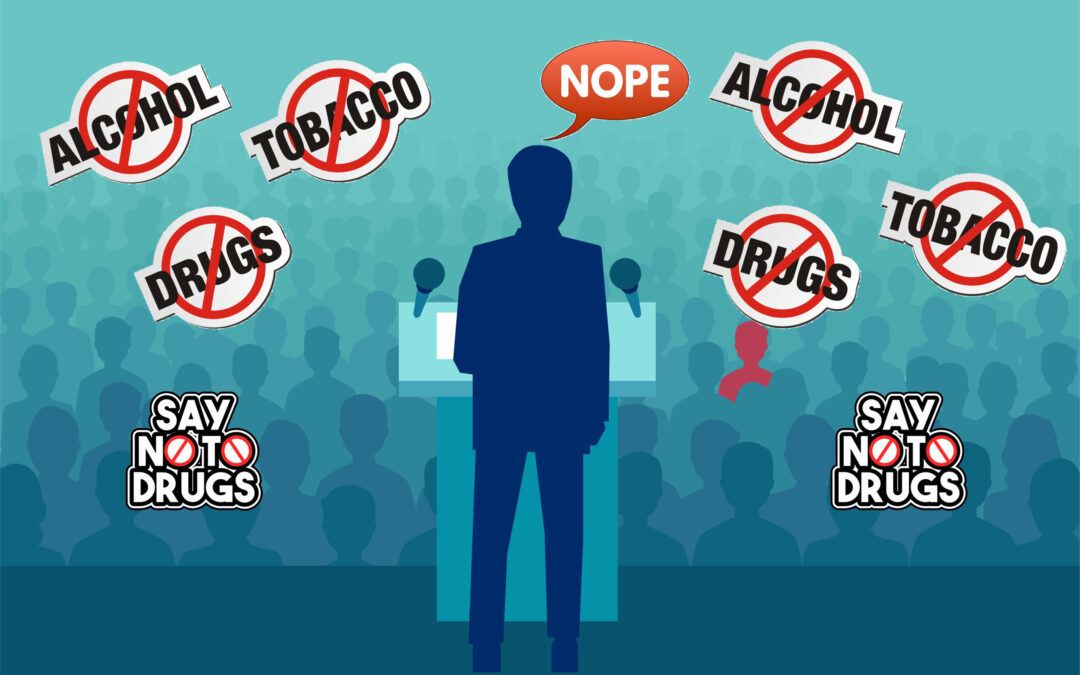Public health campaigns have long been a tool for combating societal issues, including drug use and addiction. Throughout the decades, various anti-drug ad campaigns have aimed to educate, prevent, and reduce drug use. Let’s take a journey back in time and reflect on some notable anti-drug ad campaigns.
“Just Say No”
One of the most iconic anti-drug campaigns, “Just Say No,” emerged in the 1980s during the Reagan administration. Spearheaded by First Lady Nancy Reagan, the campaign aimed to reduce drug use among young people through a simple message: when offered drugs, just say no.
Despite its simplicity, the campaign had significant cultural impact, spawning a movement that found its way into schools, clubs, and popular culture. However, the effectiveness of the “Just Say No” campaign has been widely debated.
Critics argue that the campaign oversimplified the complex issue of drug use and addiction, focusing solely on individual willpower and ignoring the social, economic, and psychological factors that contribute to drug abuse. This oversimplification potentially stigmatized those unable to “just say no,” and left many ill-equipped to understand or navigate the multifaceted nature of substance abuse.
“Say Nope to Dope”
In the 1990s, “Say Nope to Dope” was a popular catchphrase in anti-drug campaigns. This slogan was often accompanied by ads depicting the negative consequences of drug use, intending to shock or scare young people away from drug experimentation.
This fear-based approach, while attention-grabbing, has been criticized for its lack of efficacy. Research suggests that scare tactics can often backfire, leading to curiosity rather than prevention. Much like the “Just Say No” campaign, “Say Nope to Dope” did not fully address the complex causes and effects of drug addiction, leading many to question its overall impact.
“This is Your Brain on Drugs”
Perhaps one of the most memorable anti-drug ad campaigns is the “This is Your Brain on Drugs” ad, launched by the Partnership for a Drug-Free America in the 1980s. The campaign famously featured an egg as a metaphor for the brain, and a hot frying pan representing drugs. The sizzling egg effectively demonstrated the campaign’s message: drugs fry your brain.
This campaign was successful in creating a striking visual that resonated with viewers, and it also opened the door to discussing the neurobiological impact of drug abuse. However, critics argue that this oversimplified representation failed to capture the nuanced nature of drug addiction, including factors such as genetic predisposition, mental health issues, and socio-economic status.
Conclusion
While these old school anti-drug ad campaigns are undoubtedly a significant part of our cultural history, their effectiveness in preventing drug use and addiction is debatable. Their focus on catchy slogans and oversimplified messages may have raised awareness, but they largely ignored the complexity of drug addiction, potentially contributing to stigma and misunderstanding.
As we look to the future, it’s essential that we draw on these lessons from the past. Effective anti-drug campaigns need to balance catchy, memorable messaging with accurate, comprehensive information. They must address the root causes and multifaceted nature of drug addiction, promoting empathy and understanding over stigma and fear. In doing so, we can hope to create campaigns that truly educate, support, and make a meaningful impact on the issue of drug use and addiction.

